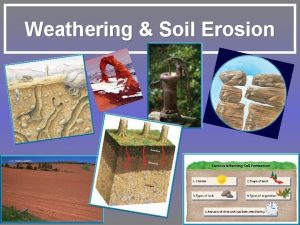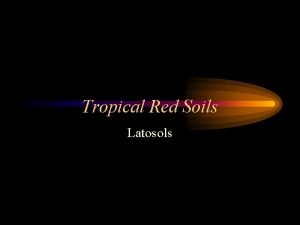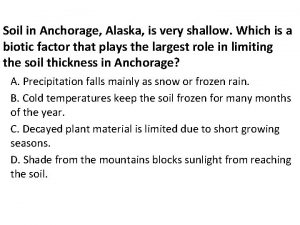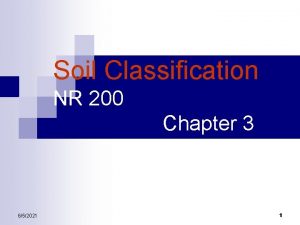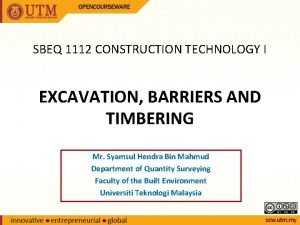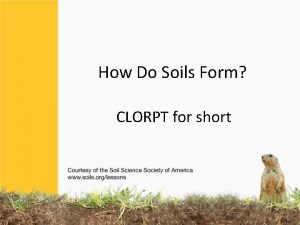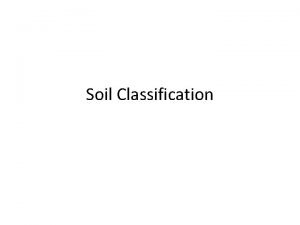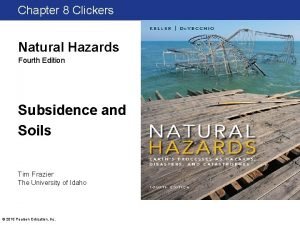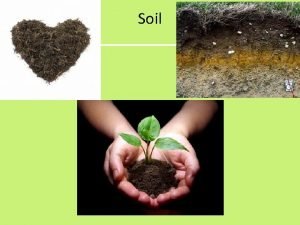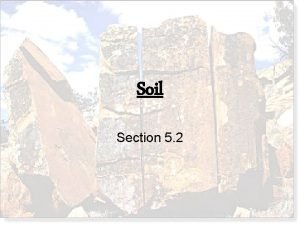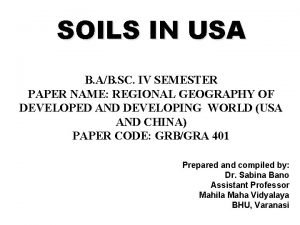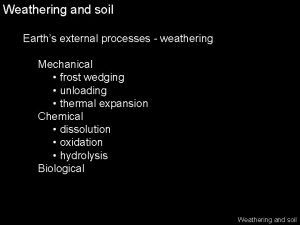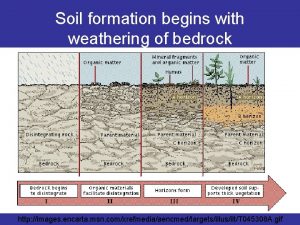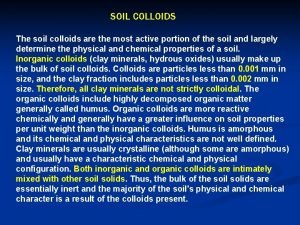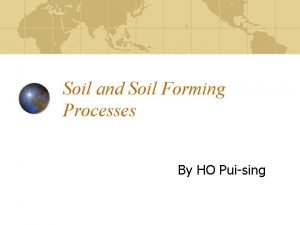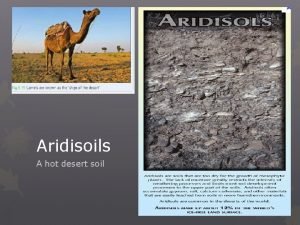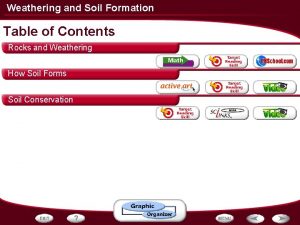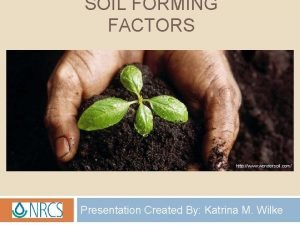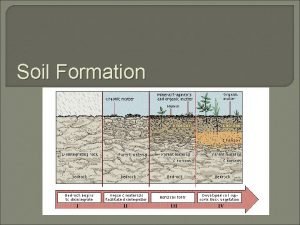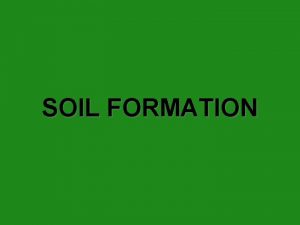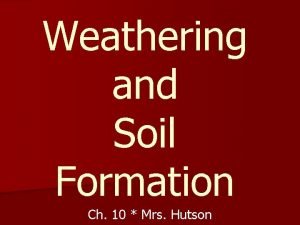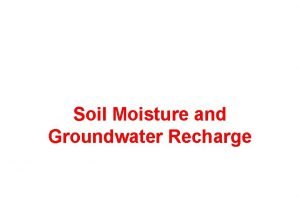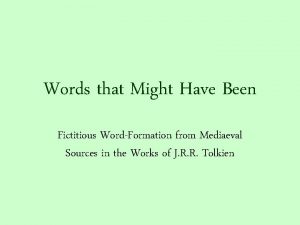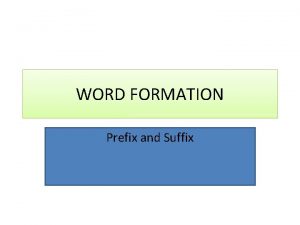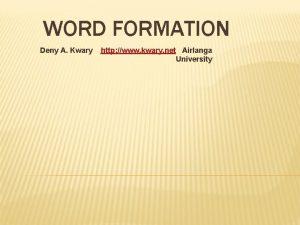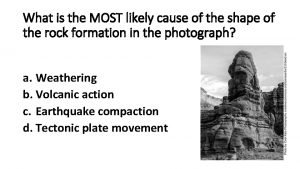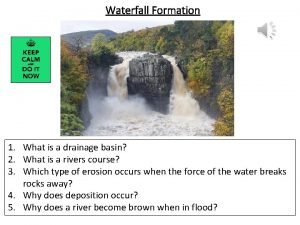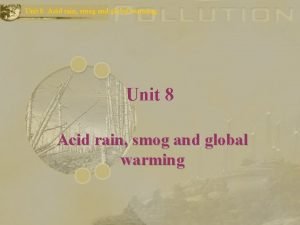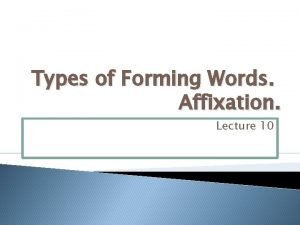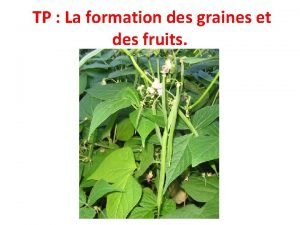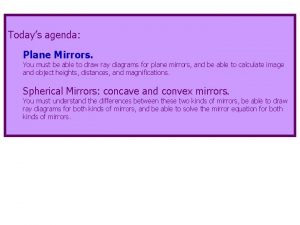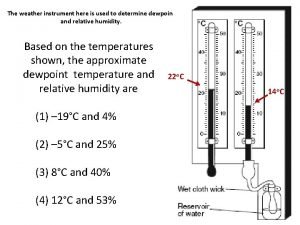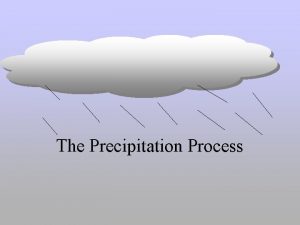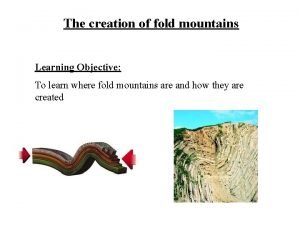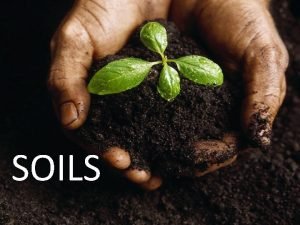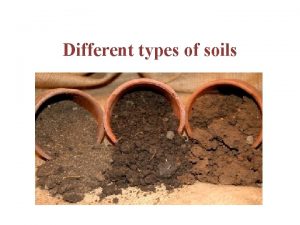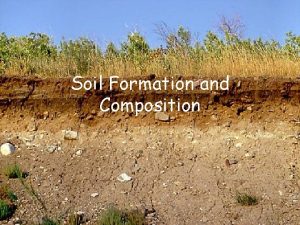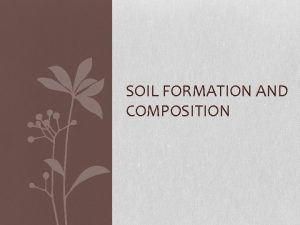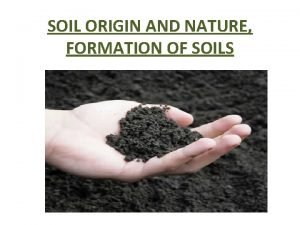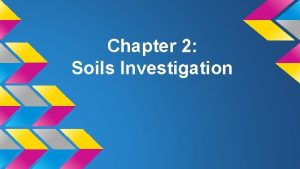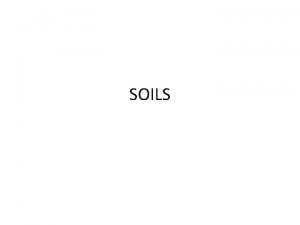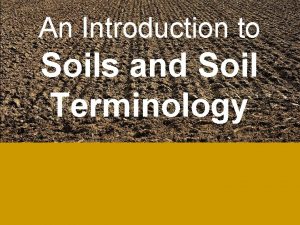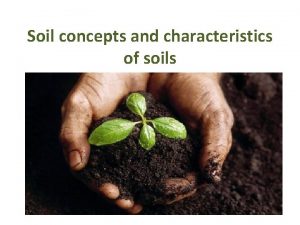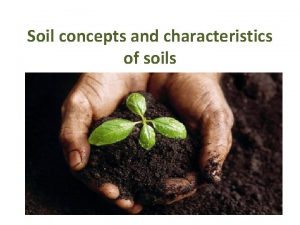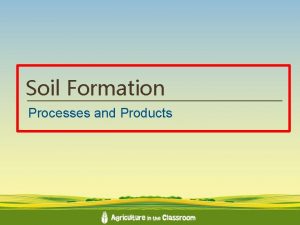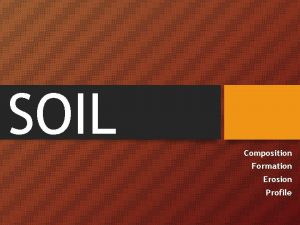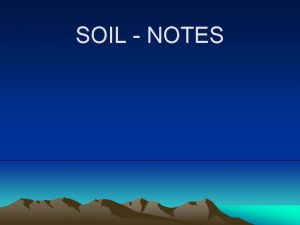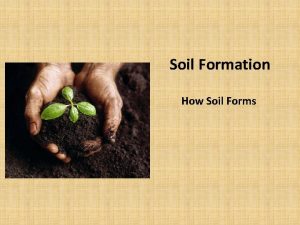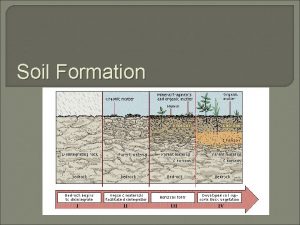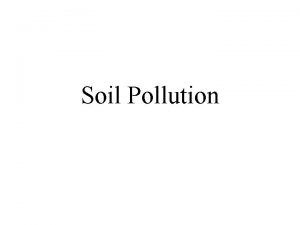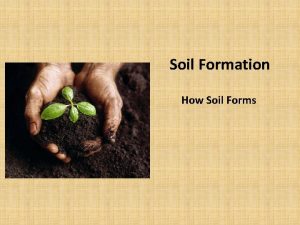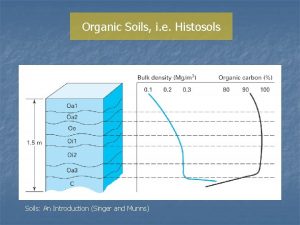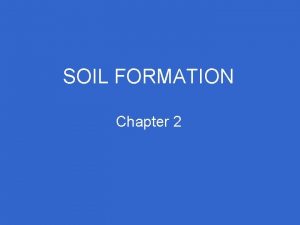Introduction to Soils 1 Soil Formation Soil is


























































- Slides: 58

Introduction to Soils 1

Soil Formation Soil is defined as the entire unconsolidated material that overlies and is distinguishable from bedrock. Composed of loosely bound mineral grains of various sizes and shapes. Contains voids of varying sizes. These voids contain: n n n Air Water Organics 2

Soil Formation - Weathering The principal factor by which rock is converted into soil. 3

Soil Formation - Weathering Two types: n Physical w breaks rock masses into smaller pieces without altering the chemical composition of the pieces. n Chemical w decomposition of rock through the chemical reactions that take place between minerals of the rock and the air, water or dissolved chemicals in the atmosphere. 4

Physical Weathering Unloading – fracturing; removal of overlying material 5

Physical Weathering Frost Action – trapped moisture in rocks freeze. Moisture expand to 1/10 of its original volume, creating pressure of up to 4000 psi 6

Physical Weathering Organism Growth–wedging action caused by tree and plant root growth in the joints of rock hastens the disintegration process. 7

Physical Weathering Abrasion – Sediments suspended in wind or fast-moving water. Rock particles carried by glacial ice. 8

Chemical Weathering Decomposition of rock through chemical bonding Examples include: n n n Hydration (combining with water) Oxidation Carbonation (saturation with carbon dioxide) 9

Chemical Weathering Oxidation – chemical union of a compound with oxygen; e. g. rusting, chemical reaction of oxygen, water and the iron mineral pyrite forming ferrous sulfate. 10

Chemical Weathering Hydration – chemical union of a compound with water. 11

Chemical Weathering Carbonation – CO 2 from the air unites with various minerals to form carbonates. 12

Soil Formation - Methods Residual Soils – weathered in place. Transported Soils – glacial ice, water and wind – agents. 13

Questions? n What are the two types of weathering called? § What are the two types of soil formation methods? 14

Soil Characteristics PHYSICAL n GRAIN / PARTICLE SIZE n GRAIN / PARTICLE SHAPE 15

Soil Characteristics – Sieve Analysis INCH SIEVES Ranging from 3” - 1/4” NUMBERED SIEVES Ranging from # 4 - # 200 16

Soil Characteristics – Grain/Particle SIZE Four major SIZE groups: n Cobbles – greater than 3” n Gravels – Passes a 3” sieve and retained on No. 4 sieve (approx 0. 25”) n Sands – Passes No. 4 sieve and retained on No. 200 sieve (0. 072 mm) n Fines – Passes No. 200 sieve 17

Soil Characteristics – Grain/Particle SHAPE subdivided depending on the amount of weathering that has acted on them • Extremely thin compared to their length and width. • Only fine grained material of the clay variety has this characteristic shape. • Platy grains are responsible for the plasticity of clay. 18 • Highly compressible under static load

Soil Characteristics Grain/Particle SHAPE - Platy PLATY SHAPES PRIMARILY GRAINED MATERIAL OF THE CLAY VARIETY - In general, the higher the moisture content of clay or silt, the less its strength and bearing capacity. 19

Soil Characteristics GRADATION distribution of particle sizes within a soil mass. 20

Questions? n How is particle size determined? § What are the two types of poorly graded soil? 21

Soil Classification UNIFIED SOILS CLASSIFICATION SYSTEM (USCS) 22

Soil Classification- USCS COARSE GRAINED Gravel / Sand FINE GRAINED Silt / Clay PEAT Organic Material 23

Soil Classification- USCS 24

Soil Classification- USCS 25

Questions? n What is the USCS based on? § What is the symbol for gravel based of the USCS? 26

Field Identification of Soil Useful Sources of Information S-2 Intelligence Report Local Inhabitants Maps and Aerial Photos Soil Exploration Surface Sample Existing Excavations Test Hole 27

KSE K-2009 SOIL TEST SET LABORATORY DYNAMIC CONE PENETROMETER SPEEDY MOISTURE TESTER 28

Soil Classification Wire Diagram 29

Questions 30

Demonstration 31

Practical Application 32

Bearing Capacity 33

Bearing Capacity The ability of a soil to support a load applied by an engineering structure. A soil with insufficient bearing capacity might fail, by shear, allowing the structure to sink and shift. Dense and well graded soil with angular particles generally has good bearing capacities. 34

35

36

California Bearing Ratio (CBR) 37

CBR Used to measure bearing capacity CBR is a comparison of soil to crushed limestone CBR is expressed as a percentage Determined using the Dual Mass Dynamic Cone Penetrometer (DCP) 38

Dynamic Cone Penetrometer Rod Assembly & Dual Mass Hammer Set Pins & Clips, Allen Wrench Magnetic ruler w/ Digital Assembly 39

DCP Used To estimate strength characteristics of: n n Fine and course grained soils Granular construction materials Weakly stabilized or modified materials Soils under stable layer (by drilling access hole) 40

DCP Operations – Pre Ops Inspection n Normal, wear, tear, and fatigue expected Ensure joints tight – use loctite and tools Ensure points are within tolerance, check with go-no go 41

DCP Two Man Ops Marine – 1 • Hold device in place by handle in vertical position • Tap device (hammer) till top of cone flush with soil • Start hammer process • Lift hammer, drop hammer Marine – 2 • Check device for zero reading • Hold vertical scale between soil surface and bottom of hammer • Records: - number of hammer blows - depth of penetration 42

Data Recording - Manual recording of CBR data 43

DCP 44

California Bearing Ratio (CBR) Hardness Measurement - Manual 45

Questions? 46

Data Acquisition System (DAS) 47

DAS Records data from DCP test Communicates with and records data from Soil Moisture Probe (SMP) Can store up to 8 hours of test data Can download to a computer 48

Questions? 49

50

Questions? 51

Questions? 52

SMP 53

54

55

Demonstration / Practical Application 56

Questions? n What two methods are used for the sedimentation test? § What is California Bearing Ratio use to determine? 57

Summary How soil is formed. n Composition of a soil mass. n How to conduct a hasty field I. D. on a previously unknown soil. n § IRF 58
 The rate of weathering depends upon the area's ____
The rate of weathering depends upon the area's ____ Red latosols
Red latosols Soil
Soil The finest grained soils are richest in
The finest grained soils are richest in Prairie soils (mollisols) are _______.
Prairie soils (mollisols) are _______. Continuous tubular rails
Continuous tubular rails Clorpt model
Clorpt model Soil order classification
Soil order classification How does the study of soils help evaluate natural hazards?
How does the study of soils help evaluate natural hazards? Four components of soil
Four components of soil Which is not true of laterite soils
Which is not true of laterite soils Porosity of soil
Porosity of soil Forensics
Forensics Pedocal soils
Pedocal soils Formation initiale vs formation continue
Formation initiale vs formation continue Venn diagram of mechanical and chemical weathering
Venn diagram of mechanical and chemical weathering Soil formation begins with weathering of
Soil formation begins with weathering of Types of soil colloids
Types of soil colloids Factors affecting soil formation
Factors affecting soil formation Soil science ppt
Soil science ppt Soil formation
Soil formation Oabcr
Oabcr Characteristics of aridisols
Characteristics of aridisols Stages of soil development
Stages of soil development Formation of soil
Formation of soil Soil
Soil Factors affecting soil formation
Factors affecting soil formation What is bedrock
What is bedrock Importance of soil formation
Importance of soil formation Mechanical and chemical weathering venn diagram
Mechanical and chemical weathering venn diagram Living soil vs dead soil
Living soil vs dead soil Four major spheres of the earth
Four major spheres of the earth Steps of urine formation
Steps of urine formation Urine formation
Urine formation Soil moisture introduction
Soil moisture introduction Body paragraph
Body paragraph Habit formation
Habit formation Dwimmer crafty
Dwimmer crafty Word formation processes in morphology
Word formation processes in morphology Ram word formation
Ram word formation Word formation suffixes and prefixes
Word formation suffixes and prefixes Deny word formation
Deny word formation The most likely cause
The most likely cause Explain the formation of a waterfall 6 marks
Explain the formation of a waterfall 6 marks Objectives of word formation
Objectives of word formation Smog formation
Smog formation When was soap first used
When was soap first used Ted kaczynski handwriting
Ted kaczynski handwriting Non productive affixes
Non productive affixes Formation d'un fruit
Formation d'un fruit Formation of image of an extended object by a plane mirror
Formation of image of an extended object by a plane mirror Steps for cloud formation
Steps for cloud formation Nebular theory comic strip
Nebular theory comic strip During the ice crystal process of rain formation
During the ice crystal process of rain formation Pistol power offense
Pistol power offense Three sections of northern plains
Three sections of northern plains Morning glory clouds australia
Morning glory clouds australia Rules for word formation
Rules for word formation When the starter is bent upward into simple upfold called
When the starter is bent upward into simple upfold called
